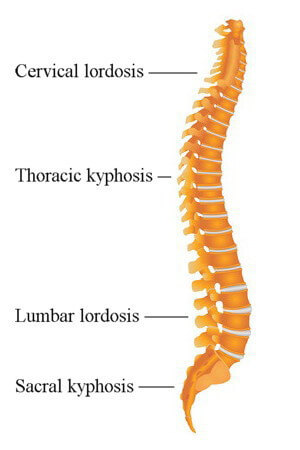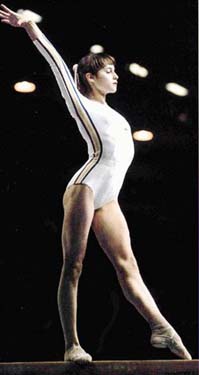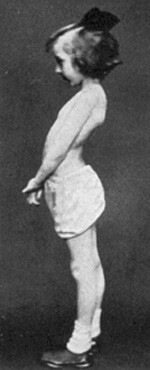You can listen to Sarah’s podcast on this topic here:
Cómo la respuesta de acción conduce al dolor de espalda
Cómo y por qué desarrollamos las curvas naturales de nuestra columna
En los primeros meses de vida estamos completamente indefensos, incapaces de gatear o incluso sentarnos solos. Llevamos nueve meses acurrucados en posición fetal y todavía tenemos que controlar los músculos extensores de nuestro cuello y espalda, que nos permiten levantar la cabeza y arquear la espalda baja.
Alrededor de los tres meses de edad, finalmente logramos levantar la cabeza del suelo cuando estamos acostados boca abajo. Unos meses más tarde, los músculos de la espalda baja se activan, lo que nos permite gatear, sentarnos y, finalmente, pararnos y caminar.
Once we are using the extensor muscles of our back and neck on a regular basis, the cervical and lumbar curves in our spine will begin to develop. These are called lordotic curves, and they curve in the opposite direction as the kyphotic curves of the thoracic and sacral portions of the spine.
The natural kyphotic and lordotic curves of the spine are essential to our spine’s ability to absorb shock; they allow the spine to function like a big spring. If we didn’t have these curves, our vertebrae would be stacked on top of each other in a straight line, and compressive forces would cause a great deal of damage and pain.

La respuesta de acción
In infants, the contraction of the back and neck muscles in response to the instinctive desire to become mobile is called the Landau Reflex. But even after we learn how to stand, walk and run, our extensor muscles automatically contract every time we want to get up and go; this is the action response. We arch our back, lift our head, pull our shoulders back, stick out our chests, straighten our knees, and rotate our legs outward.
Our action response is also triggered by eustress, or positive stress, such as giving a presentation or meeting our new boss. Whenever we want to make a good impression and be on our game, we instinctively contract our back muscles so that we stand up straight, look taller, and appear to be confident. This posture prepares us both physically and psychologically for action.

Asociamos inconscientemente esta postura erguida, a menudo arqueada, con confianza, fuerza, juventud y belleza. No es casualidad que el ejército entrene a los soldados para que se pongan erguidos y saquen el pecho. La postura de acción-respuesta muestra al enemigo que está listo para pelear. Y nos resulta mucho más agradable mirar a alguien que está erguido que redondeado; imagínese mirando a un bailarín o un patinador sobre hielo que se encorvaba mientras actuaba.
Los efectos negativos de la respuesta de acción
Hasta ahora, la respuesta a la acción suena bastante bien. Nos prepara para la acción y automáticamente nos hace ver y sentirnos más seguros.
When our action response is triggered once in a while, it is great. But when it’s activated constantly by a high-stress job or practiced repetitively as part of physical training, the pattern of muscular contraction becomes learned. So even after you retire from your stressful job or quit dancing, your back muscles remain habitually tight, causing soreness, pain, and often structural damage to intervertebral discs.
Once the action response has become habitual, and we are subconsciously holding our lower back muscles tight all the time, pain becomes pretty much inevitable. When the extensor muscles of the back are chronically contracted, they will typically pull the lumbar spine into hyperlordosis. The exaggerated arching of the lower back compresses the discs in between the lumbar vertebrae, often causing the discs to bulge or herniate. People with tight lower back muscles often experience sciatica due to compression of the sciatic nerve as it exits the spine in between the lumbar vertebrae. Tight lower back muscles also compress the sacroiliac joint, causing pain and inflammation, and potentially shifting the joint out of alignment.

Revertir los efectos de la respuesta de acción
Los efectos negativos de la respuesta de acción se pueden prevenir, aliviar y, a menudo, eliminar mediante la reeducación del sistema nervioso para liberar la contracción muscular crónica en los músculos de la espalda. Para reeducar el sistema nervioso, debemos pasar por un proceso de aprendizaje activo que implica un movimiento lento y consciente.
The most effective way to teach the nervous system to release chronic muscular contraction is with the movement technique of pandiculation. Pandiculation sends accurate biofeedback to the nervous system, resetting the gamma feedback loop, which controls the resting level of tension in our muscles. Thomas Hanna developed the technique of pandiculation and incorporated into his system of neuromuscular education called Clinical Somatic Education.
Vea estas otras publicaciones sobre reflejos, estrés y postura:
Cómo la respuesta de abstinencia conduce a una postura redondeada
Lectura recomendada:
The Pain Relief Secret: How to Retrain Your Nervous System, Heal Your Body, and Overcome Chronic Pain by Sarah Warren, CSE
Somatics: Reawakening the Mind’s Control of Movement, Flexibility and Health by Thomas Hanna

